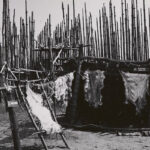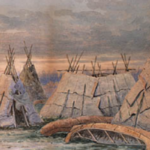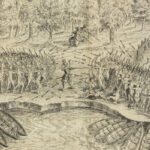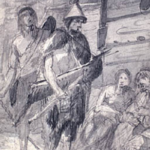The Haida Nation: Guardians of the Islands and the Sea
The Haida Nation, known as the “People of the Islands,” has lived on the archipelago of Haida Gwaii off the northern coast of British Columbia for millennia. Renowned for their maritime prowess, artistic traditions, and deep connection to their environment, the Haida have maintained a vibrant culture despite challenges posed by European contact and colonization. The story of the Haida Nation is one of remarkable resilience, rooted in their ancestral lands and seas, and their ongoing stewardship of Haida Gwaii serves as a testament to their enduring spirit.
Ancient Origins: People of Haida Gwaii
The Haida Nation’s origins trace back over 12,000 years to Haida Gwaii, an archipelago of lush forests, rugged coastlines, and rich marine ecosystems. Archaeological evidence, including village sites, tools, and totem poles, highlights the sophistication of Haida society and its close relationship with the land and sea. The Haida were master carvers, navigators, and fishers, utilizing the abundant resources of Haida Gwaii to sustain a thriving community.
In Living the River’s Legacy, historian Keith Thor Carlson writes, “Haida Gwaii was not just a place of residence; it was a living entity, intertwined with the Haida’s identity, spirituality, and survival.”
The Haida language, X̱aayda Kil and Xaayda Kil/Kyuu, embodies their cultural connection to their homeland, with its vocabulary and syntax deeply tied to the natural environment. Oral histories, passed down through generations, tell of their creation stories and their stewardship of the land and seas.
Social Structure and Cultural Practices
The Haida social structure was organized into two main clans, the Raven and the Eagle, with strict protocols governing marriage, inheritance, and leadership. These clans were further divided into family groups, each associated with specific territories and resources.
Potlatches, or ceremonial gatherings, were central to Haida culture. These events served as opportunities for feasting, gift-giving, and the performance of oral histories, reinforcing social bonds and passing on cultural knowledge. The totem poles that the Haida are renowned for were not merely artistic creations but tangible records of clan histories, family lineages, and spiritual beliefs.
In Keeping the Stories Alive, anthropologist Marianne Ignace observes, “Every Haida carving, from monumental poles to intricate boxes, tells a story that connects the past to the present, preserving the knowledge and values of the Haida people.”
Maritime Mastery and Trade
The Haida were exceptional seafarers, navigating the waters of the Pacific in cedar canoes that were marvels of engineering. These vessels, capable of traveling long distances, facilitated trade and communication with neighbouring nations such as the Tlingit and Gitxsan, as well as communities along the coast of what is now Alaska and British Columbia.
Jean Barman, in West Beyond the West, writes, “The Haida were not isolated by their island home; rather, they used their maritime skill to become central players in a vast coastal trade network.”
This trade included goods such as dried fish, sea otter pelts, and intricately woven cedar bark garments. The Haida’s economic and cultural influence extended far beyond Haida Gwaii, making them a significant force in the Pacific Northwest.
First Contact with Europeans
European contact began in the late 18th century, with explorers such as James Cook and Spanish navigators documenting the Haida’s rich culture and impressive craftsmanship. The fur trade quickly became a central point of interaction, as the Haida traded sea otter pelts for metal tools, firearms, and textiles.
While these early exchanges brought new materials to Haida Gwaii, they also introduced devastating diseases. Epidemics of smallpox, measles, and influenza ravaged the Haida population, reducing it from an estimated 20,000 in the mid-1700s to less than 600 by the late 19th century.
Bruce Trigger, in Indigenous Peoples of Canada, describes the impact as “one of the most catastrophic population declines in the history of Indigenous peoples, altering the social and cultural fabric of the Haida Nation.”
Colonization and the Loss of Land
The arrival of settlers and the establishment of colonial governments in the 19th century brought further challenges to the Haida Nation. Missionaries sought to suppress Haida spiritual practices and ceremonies, including the potlatch, while federal policies imposed residential schools that disrupted families and communities.
The imposition of Indian reserves confined the Haida to small areas of their traditional territory, undermining their connection to the land and resources. Historian Robin Fisher, in Contact and Conflict, notes, “The Haida, like many coastal nations, faced relentless pressure to abandon their cultural practices and adapt to a colonial system that marginalized their identity.”
Despite these challenges, the Haida continued to preserve their traditions, passing on their language, stories, and artistic practices to future generations.
Cultural Revitalization in the 20th Century
The 20th century marked a period of revitalization for the Haida Nation. Efforts to reclaim their cultural heritage included the restoration of totem poles and the revival of potlatch ceremonies, which had been suppressed under colonial rule. Haida artists, including renowned carvers like Bill Reid and Robert Davidson, brought international recognition to Haida art, ensuring its place as one of the great Indigenous art traditions of the world.
The establishment of the Haida Heritage Centre at Kay Llnagaay on Haida Gwaii has become a focal point for cultural education, language revitalization, and community gatherings. Marianne Ignace, in Keeping the Stories Alive, emphasizes, “The Haida Heritage Centre is more than a museum; it is a living space where Haida knowledge, language, and art are actively preserved and shared.”
Environmental Stewardship and Self-Governance
Today, the Haida Nation is a global leader in environmental stewardship and Indigenous self-governance. Their efforts to protect Haida Gwaii’s unique ecosystems, including the establishment of Gwaii Haanas National Park Reserve and Haida Heritage Site, reflect their enduring commitment to their ancestral lands.
In 2010, the Haida Nation signed a historic co-management agreement with the Government of Canada, ensuring joint stewardship of Gwaii Haanas. Historian Margaret Conrad, in A Concise History of Canada, writes, “The Haida’s leadership in environmental protection demonstrates their ability to balance cultural preservation with contemporary governance.”
Conclusion: A Legacy of Resilience
The history of the Haida Nation is a profound testament to resilience and cultural continuity. From their ancient maritime culture to their adaptation to European contact and their leadership in modern environmental and cultural preservation, the Haida have maintained their identity and connection to Haida Gwaii.
As Jean Barman eloquently states in West Beyond the West, “The Haida’s story is one of survival and renewal, a reflection of their strength and their unwavering commitment to their land and culture.” Through their traditions, their advocacy, and their vision for the future, the Haida Nation continues to inspire and contribute to the cultural fabric of Canada and the world.
References
- Barman, Jean. West Beyond the West: A History of British Columbia. University of Toronto Press, 1996.
- Carlson, Keith Thor. Living the River’s Legacy: The Fraser River and Coast Salish History. McGill-Queen’s University Press, 2011.
- Conrad, Margaret. A Concise History of Canada. Cambridge University Press, 2012.
- Fisher, Robin. Contact and Conflict: Indian-European Relations in British Columbia. UBC Press, 1997.
- Ignace, Marianne and Ronald E. Ignace. Keeping the Stories Alive: Language, Land, and Culture in Indigenous Communities. University of Toronto Press, 2008.
- Miller, Bruce Granville. Paths of the Coast: Trade and Diplomacy in the Coast Salish World. University of Washington Press, 2005.
- Trigger, Bruce G. Indigenous Peoples of Canada. McGill-Queen’s University Press, 1992.
- MacDonald, George F. Haida Monumental Art: Villages of the Queen Charlotte Islands. UBC Press, 1983.
- Reid, Bill. Out of the Silence: The Art and Life of Bill Reid. Douglas & McIntyre, 2000.
- Davidson, Robert. The Legacy of a Master Carver. Greystone Books, 2004.



